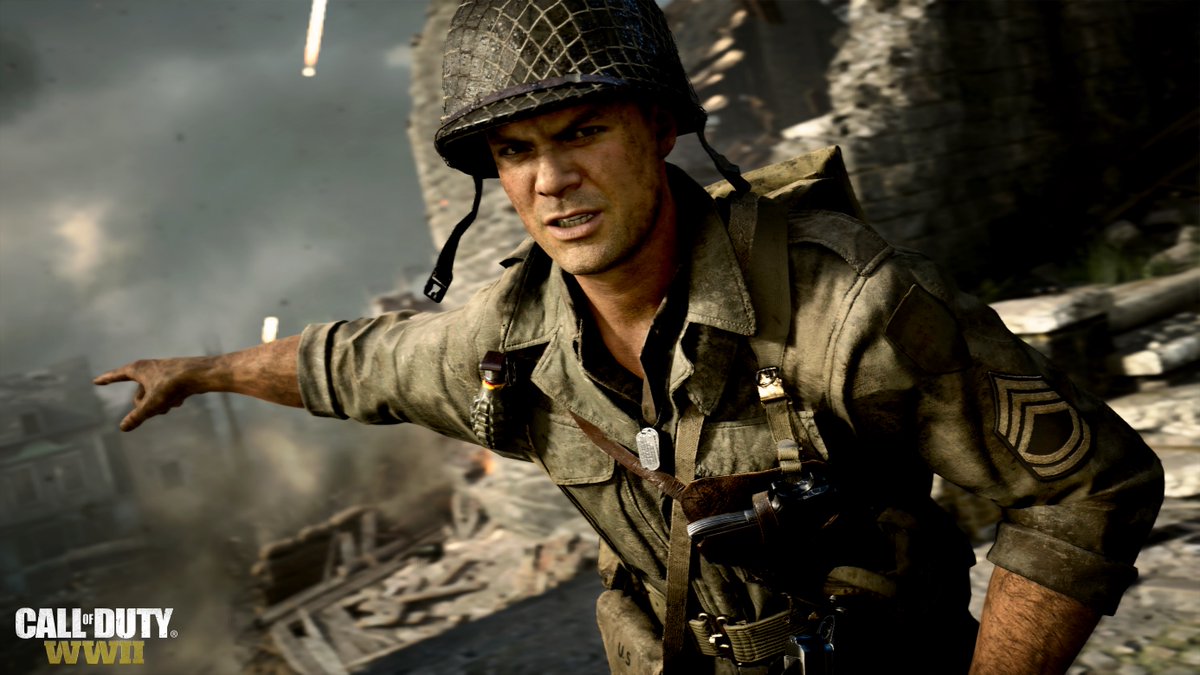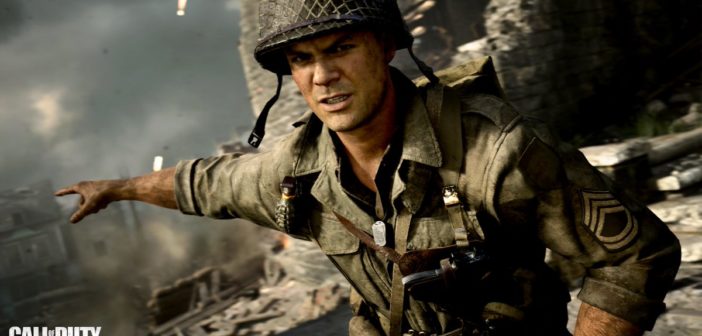
In “Call of Duty: WWII” ranked play mode, players can earn seasonal trophies and engage in competitive play.
Credit:@CoDWW2Intel
On Nov. 3 the newest game in the “Call of Duty” franchise, “Call of Duty: WWII” (World War Two) released. Developed by Sledgehammer Games and published by Activision, “Call of Duty: WWII” is a first-person shooter game taking place during the war in the 1940s.
“Call of Duty: WWII” is the second “Call of Duty” game developed by Sledgehammer, and the third to benefit from Activision’s three-year development plan. Before this plan, “Call of Duty” was a yearly series, with a single developer making one game per year. However, this caused game quality to start to drop. To combat this, Activision split the team in three, and gave each team a new project, so that a new “Call of Duty” game would still be released each year, but each game would have a three-year development cycle.
Sledgehammer Games is one of the three teams to arise from this, along with Treyarch and Infinity Ward. Before “Call of Duty: WWII,” Sledgehammer produced “Call of Duty: Advanced Warfare,” a game which was regarded at the time to change up the standard format and add much to the series. With the release of “WWII,” Sledgehammer shows that they can make another good “Call of Duty” game, and get something out of a series that is dry of new content.
“Call of Duty” as a series started out as a series devoted to telling stories based on World War II. With the release of the groundbreaking “Call of Duty 4: Modern Warfare,” the series started to drift more towards telling very extravagant and over the top modern stories. However, with the addition of WWII to the franchise, and the return to the series roots, “Call of Duty” once again shows that it can write a more subdued story based around the horrors of World War II.
“Call of Duty: WWII” has both a story and multiplayer mode, and like most recent games in the series, has a shorter single-player campaign, opting for putting more work into the multiplayer and Nazi Zombies mode that players love. The campaign revolves around the stories of the 1st Infantry Division and their experiences in Operation Overlord, also known as the Battle of Normandy, or D-Day. While this story is very cliched and doesn’t change much up from other similar games, it is effective at what it is trying to do. “Call of Duty: WWII” also marks the return of non-regenerating health to the series, something that fans have missed since “Call of Duty 2” in 2005. Critics have given much praise to the new squad-based system in which a player fights his or her enemies to build his or her squad meter build, allowing the player to use a special ability once it is full.
The multiplayer mode in “Call of Duty” is what most fans want to play when they purchase a “Call of Duty” game, and “WWII” is no different. The multiplayer in “WWII” adds a few changes, such as a new Headquarters mode where players can wander around instead of just waiting for a virtual lobby. However, the multiplayer in “WWII” is simply average, not quite as memorable as it has been in previous installments.
The Zombie mode in “Call of Duty” started as a special unlock in “Call of Duty: World at War,” the fifth installment. Since then, the mode has proven insanely popular and garnered much playing, with some players purchasing the game for this mode alone. In previous games, such as “Infinite Warfare,”
the Zombie mode is taken as a joke mode almost. Instead, in “WWII,” the Zombie mode is intended to be bone-chilling horror.
In summary, while the multiplayer is slightly lacking, the additions made to the story mode and the Zombie mode proves “Call of Duty: WWII” is possibly the best entry to the series since 2014’s “Advanced Warfare.” “Call of Duty: WWII” is only Sledgehammer’s second entry to the series, but fans should eagerly await their coming contributions in the next three years.





